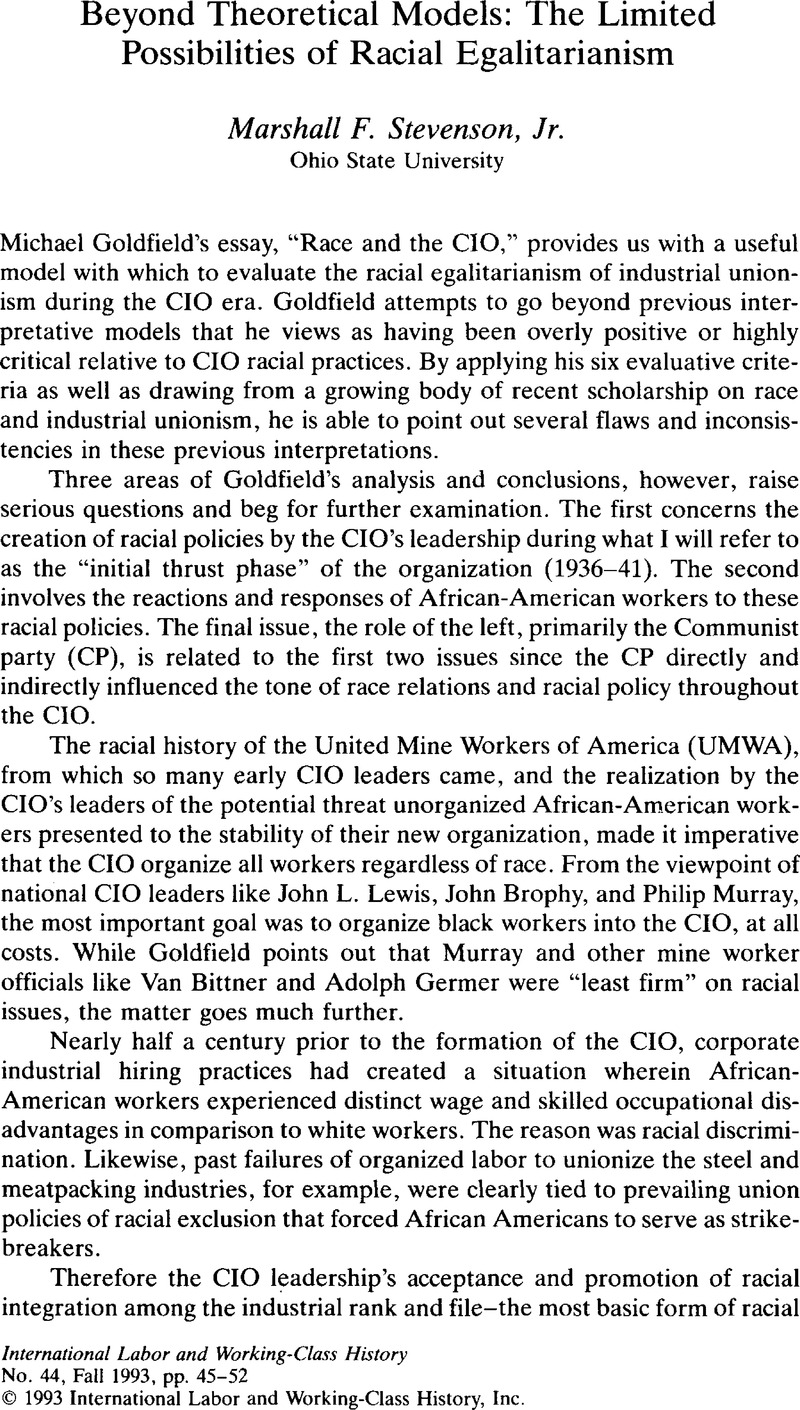Published online by Cambridge University Press: 16 December 2008

1. These were the experiences of Packinghouse Workers Organizing Committee (PWOC) organizers Henry Johnson and Frank Alsop in their efforts to unionize the Swift plant in Omaha, Nebraska, in 1938. It should also be emphasized that white opposition was partly racial as well as ideological since both Johnson and Alsop were connected to the Communist party. Ben Williams to John L. Lewis, March 23, June 8, September 28, 1938, CIO Files of John L. Lewis, part 2, reel 2.
2. Walter Smethhurst to A. M. Wendell Mallich, September 21, 1938; Smethhurst to Thomas B. Morton, November 28, 1938, Box 16, CIO Central Correspondence Files, Catholic University, Washington, D.C.
3. Yelverton Cowherd to John Brophy, October 29, 1938, Lewis files, part 2, reel 19.
4. William Mitch to Gardner Jackson, October 25, 1938, ibid., part 2, reel 13. Robert Korstad's work on FTA traces the development of that union's interracial endeavors. Also see Honey, Michael K., Southern Labor and Black Civil Rights: Organizing Memphis Workers (Urbana, 1993);Google Scholar and Kelley, Robin D.G., Hammer and Hoe: Alabama Communists during the Great Depression (Chapel Hill, 1990).Google Scholar
5. Meier, August and Rudwick, Elliot, Black Detroit and the Rise of the UAW (New York, 1979), 117–36.Google Scholar
6. Bittner did not take kindly to having to share office space with Weaver. Interview with George L. P. Weaver, November 30, 1986.
7. I use the term “overt anticommunism” because although the historiography of the ClO and communism dwells on communist participation in the ClO, the ClO and its founders were by no means communists or supporters of the program of the Communist party. The acceptance and use of communists in the initial thrust phase was as expedient as allowing African Americans to join the organization. The main power center of the ClO leadership (Lewis, Murray, Reuther, Hiliman) was anticommunist throughout the organization's existence. See Levenstein, Harvey A., Communism, Anticommunism and the ClO (Westport, Conn., 1981).Google Scholar
8. “A Program to Win a Better Way of Life for the People of North Carolina,” Winston- Salem Journal, 02 9, 1947.Google Scholar
9. “Communist Move Hit,” Charlotte News, February 17, 1947.
10. See George Crockett, “Labor Looks Ahead,” Michigan Chronicle, April 27, 1946.
11. See Roediger, David R., The Wages of Whiteness: Race and the Making of the American Working Class (New York, 1991);Google Scholar and Hill, Herbert, “Black Workers, Organized Labor, and Title VII of the 1964 Civil Rights Act: Legislative History and Litigation Record,” in Race in America: The Struggle for Equality, ed. Hill, Herbert and Jones, James E. Jr., (Madison, 1993).Google Scholar